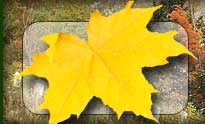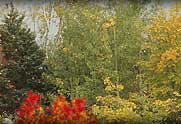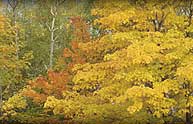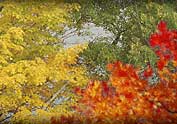Locating, Installing and viewing your Window Bird House
Congratulations! Are you ready to enter the hidden world of avian breeding? For decades, the egg laying, hatching and fledgling stages of wild birds was the sole domain of scientists. Now, you can become a citizen scientist as you prepare your home for the most unique “guests” ever to enter your domain.
The initial location of any window-mounted nest box is critical to its success. Understanding the wild birds that will use your site is paramount. Nest boxes attracting very few species of wild birds. Most birds prefer locating their nests in the open in trees, bushes, thickets, brambles, even the ground. You can, however, attract the most common backyard birds to your window nest boxes.
Chickadees, sparrows, titmice, nuthatches, downy woodpeckers, swallows and bluebirds are the most common dwellers of nest boxes in American backyards. These wild bird species have very specific requirements, such as hole size, depth and width of boxes, etc. that will determine if they choose any empty box as a home for making a nest. Bluebirds are different than the other above mentioned birds in that they prefer open grasslands versus trees or bushes. Golf courses, farms or any large lawn areas over 1 acre do very well attract bluebirds. If you habitat does not offer this environment, not to worry! The other birds love trees and bushes, and will be happy to take advantage of a safe, nesting location such as you new window bird house.
Location, Location, Location
Outside Information
As stated, wild bird parents need a safe location regarding the use of any nest box, especially a window mounted nest box. In the Northern Hemisphere, all entrance holes must face away from the prevailing winds and rains. For North America, this is generally north. If you look at your home, the north side is usually the most weather beaten side. If you place your bird house facing north, the wind and rain will create unhealthy conditions for nests and newborns. The optimum direction to place your new window bird house will be east, south or west, in that order. Birds need assistance keeping the eggs and hatchlings warm. If you are located in a very hot climate, east or west will be your best choices. The rising and setting sun will keep the nest box tolerable for wild bird parents. Most locations should choose the eastern or southern exposure as your prime location.
The chosen window needs to be in an area where constant human activity is at a minimum. The bird house should be 5-6 feet from the ground to keep it a safe distance from leaping cats or squirrels. If you can locate under an outside window shade or porch roof overhang, these provide extra weather protection. Be certain there are no bird feeders anywhere nearby. Feeding birds are a constant stress for nesting birds. If your bird feeders are too close, nesting birds will not choose your nest box. Some of the birds found at backyard bird feeders pose a direct threat to wild bird eggs and hatchlings.
Birds have multiple broods, starting from mid-February to late August. You can install your nest boxes anytime during this time frame with complete confidence. For best results, install your bird house on a day when outside temperatures are above 40° F. so that the suction cups are flexible enough to grip the glass.
No perches, please! Birds that will use your nest boxes are called clinging birds. They are more comfortable gripping the edge of an entrance hole than using a perch. Remember, there are no perches in the wild. Perches do, however, give predators such as chipmunks or squirrels a comfortable place to sit as they raid the nest boxes. Bird houses should never incorporate a perch.
Locating your window box near a shrub, bush or tree is also an important factor in making your window location an optimum choice for nesting birds. Bird parents love having the ability of protective cover nearby.
You can paint a nest box if you choose. Birds prefer neutral, earth tone colors. Never paint the inside of any nest box.
You can install more than one window bird house on your home, but be certain you place each nest box as far from each other as is logistically possible. The best solution is to place one window nest box on three sides of your home, south, east and west.
When you have chosen your optimum window location, be certain the window is completely clean and dry. Simply moisten the suction cups with water using your finger in a circular motion to wet the entire suction cup and gently, but firmly, push the suction cups onto the glass. Congratulations! You have just started a journey into the unknown world of nesting birds.
Indoor Information
Now that you have chosen your outside location, we need to go indoors and set up the 2-way mirror film and privacy card. Starting again with a completely clean and dry window glass, follow the instructions on how to remove the protective, clear film from the sticky, mirrored film. Once you have only the sticky film in your hands, starting near the top where the window bird house is located, place the top edge of the film against the glass from the inside of the window. Using a credit card, gently smooth out the film in a downward direction, eliminating any bubbles that may occur. You can lift a corner of the film off the glass to assist you in smoothing the film.
Now that you have placed the mirror film on the inside of your chosen window, take a moment to look inside the newly installed window bird house. During the daylight hours, the darkness of the interior room will create a mirrored effect for the birds using the bird house and you can see them through the smoky film. However, once night falls, the lights in the room will have an opposite effect, the birds outside will be able to see into your room. This is the reason for the privacy card. Place the single suction cup provided in the kit directly above the location where you place the 2-way mirror film. Now hang the privacy card using the hole in the card through the hook attached to the suction cup. Keep this card hanging over the mirror film at all times.
How to view your nesting birds
When you have a nesting pair of birds, it’s important to follow a few guidelines so as not to disturb your birds. Children should be supervised at all times during the nesting and hatchlings stages. Only observe the nest during the daylight hours when the mirror film is most effective from inside your home. Simply move the privacy card to one side and look into the window nest box for a moment or two and replace the privacy card. Parent birds are most protective during the egg-laying and hatchling stages. Once the babies have hatched, you can spend more time observing the action, but still keep the viewing to a minimum. Never shout or tap the glass. Do not take pictures with a flash. Never use a flashlight. Remember, if the parents feel threatened, they will abandon a nest to save themselves and start over again in a safer location.
Feel free to look inside your window nest box, but these precautions should be observed for the safety of the birds.
The room with the window bird house attached should be a quiet room at all times. Birds can feel noise, not just hear it. Screaming and yelling by humans inside the home will have a debilitating effect on nervous parent birds, so try to choose a room that is not used regularly by humans.
|



